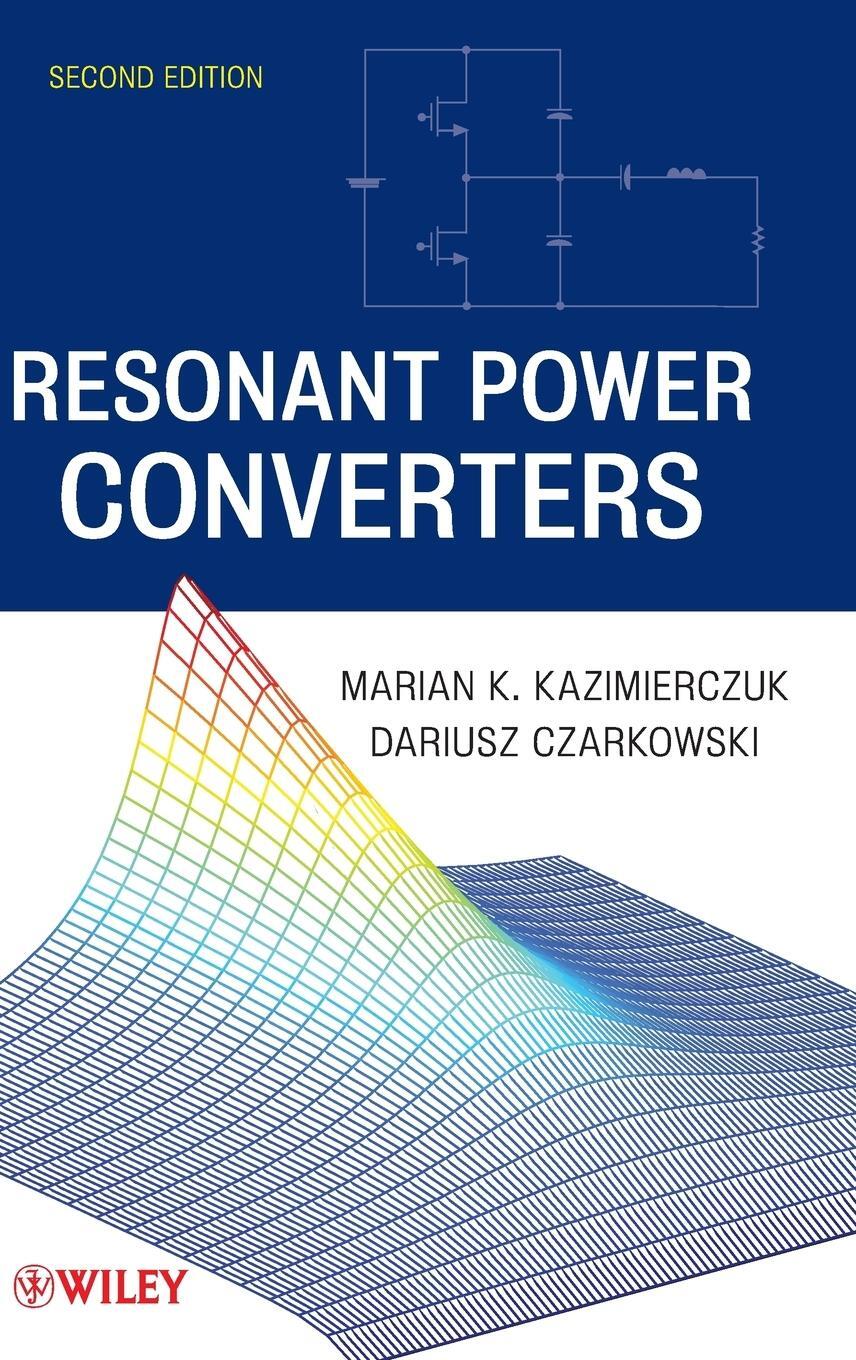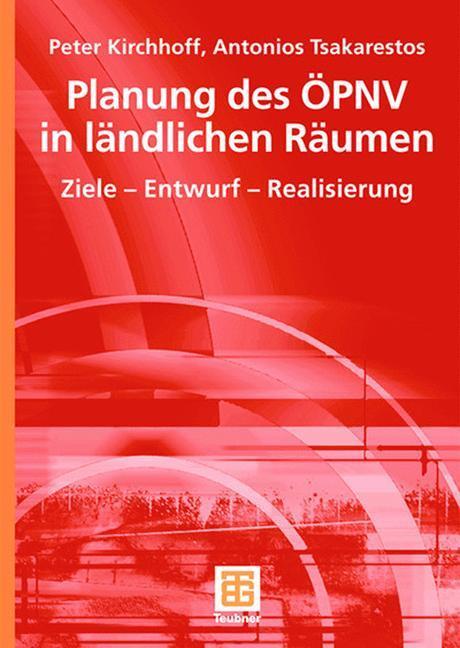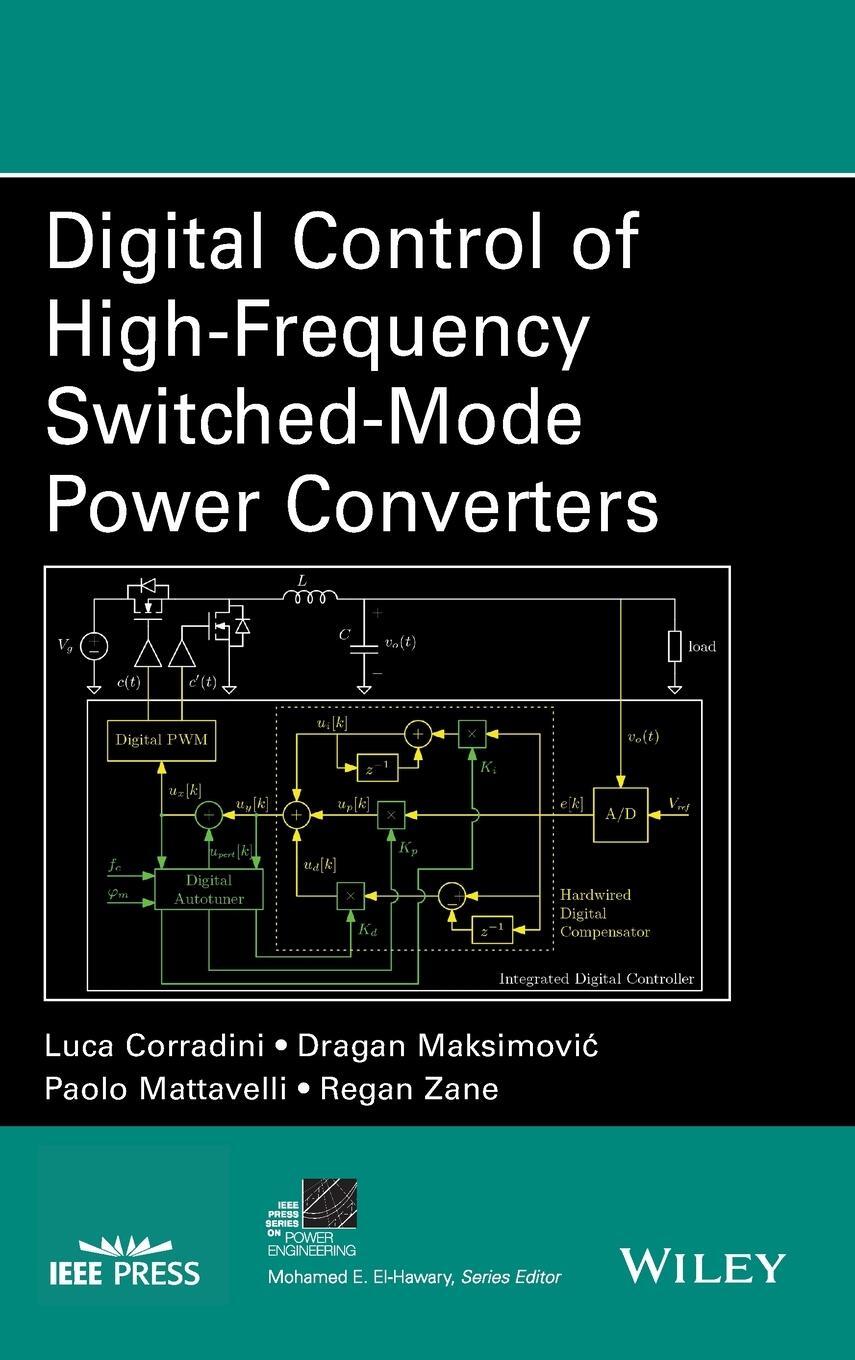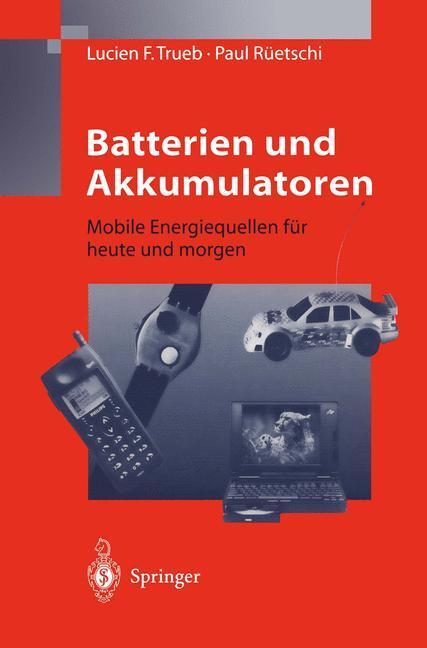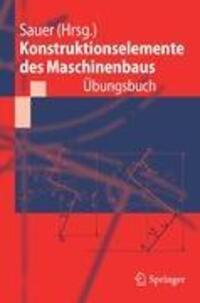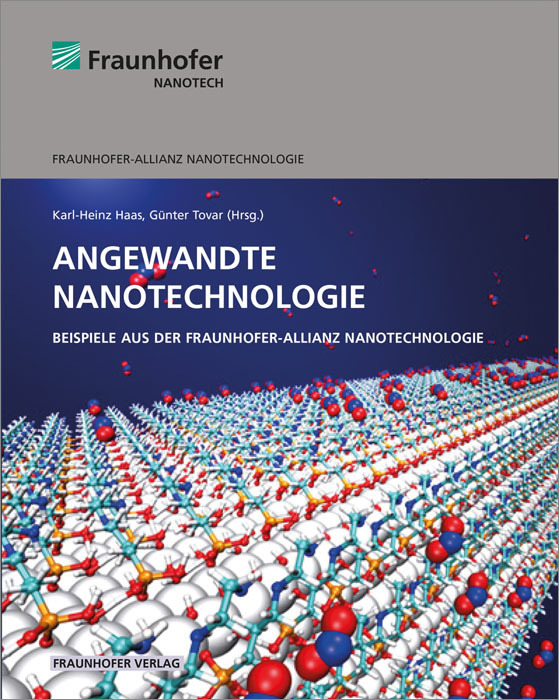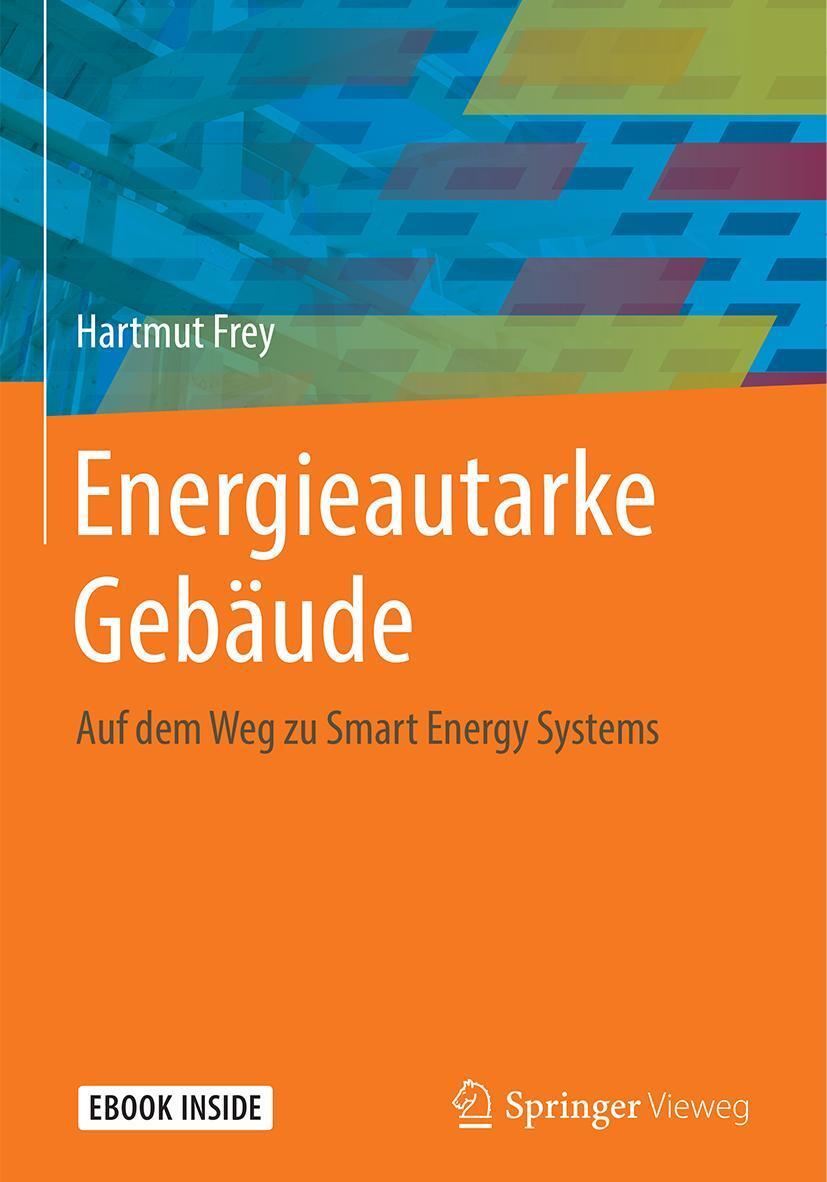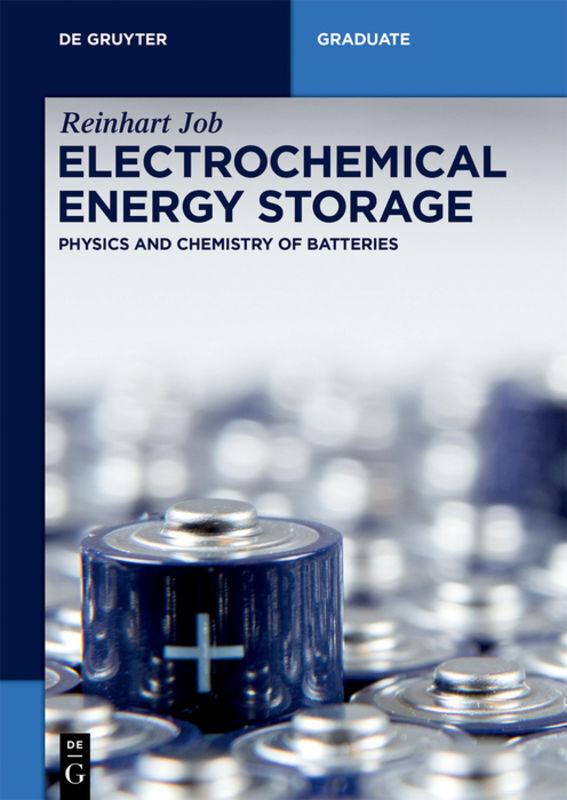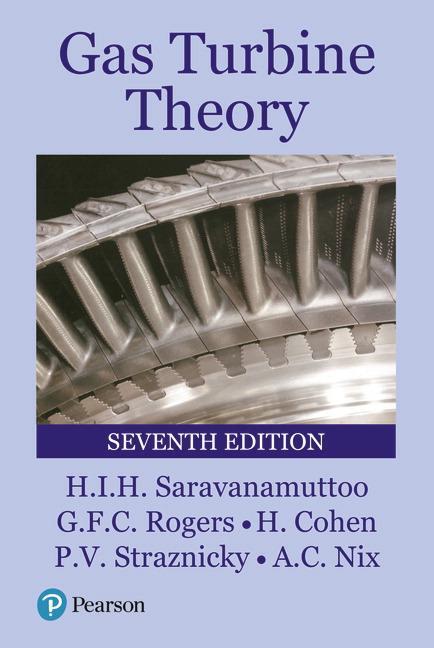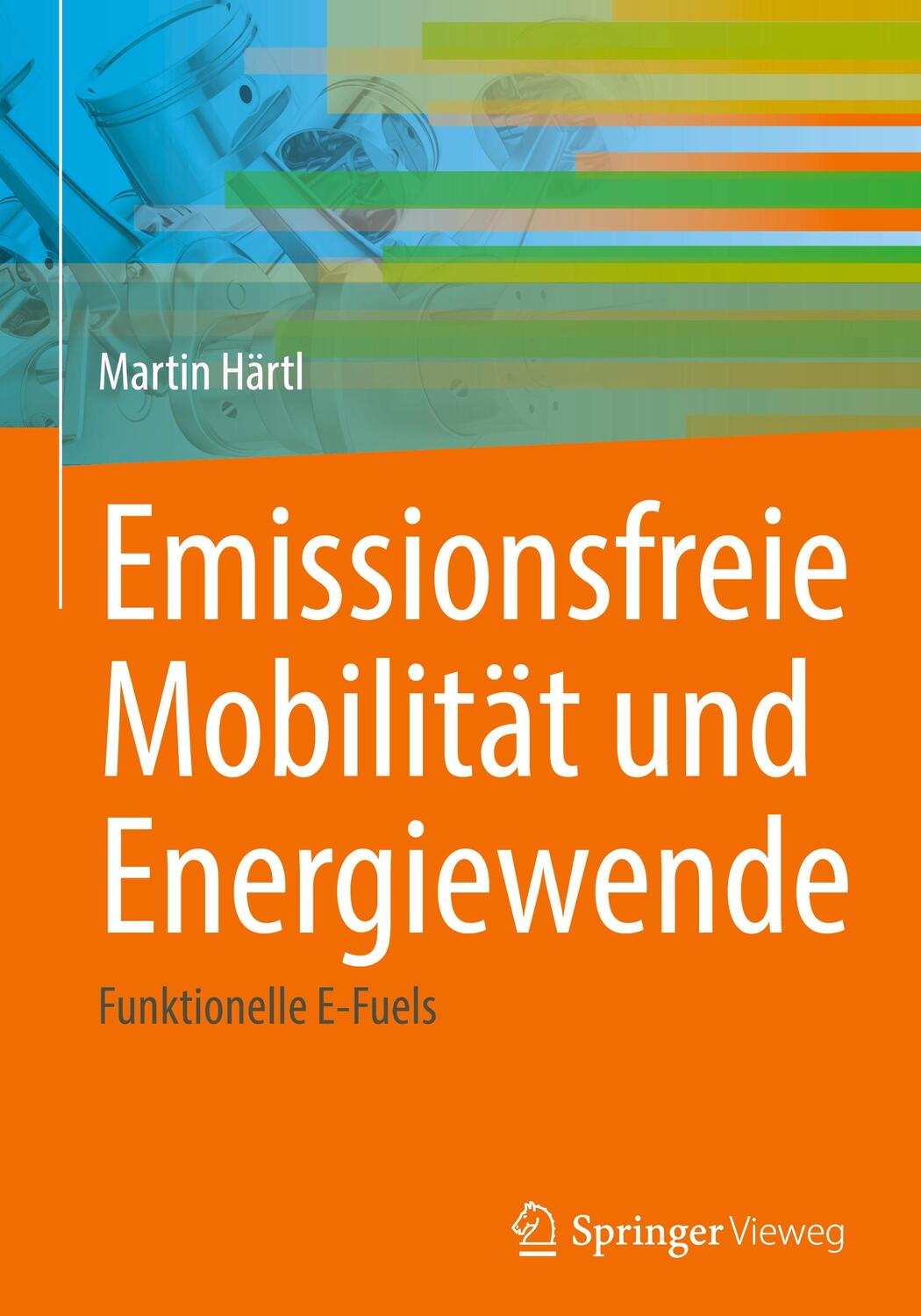Dekorationsartikel gehören nicht zum Leistungsumfang.
Sprache:
Englisch
176,50 €*
Versandkostenfrei per Post / DHL
Aktuell nicht verfügbar
Kategorien:
Beschreibung
This book is devoted to resonant energy conversion in power electronics. It is a practical, systematic guide to the analysis and design of various dc-dc resonant inverters, high-frequency rectifiers, and dc-dc resonant converters that are building blocks of many of today's high-frequency energy processors. Designed to function as both a superior senior-to-graduate level textbook for electrical engineering courses and a valuable professional reference for practicing engineers, it provides students and engineers with a solid grasp of existing high-frequency technology, while acquainting them with a number of easy-to-use tools for the analysis and design of resonant power circuits. Resonant power conversion technology is now a very hot area and in the center of the renewable energy and energy harvesting technologies.
This book is devoted to resonant energy conversion in power electronics. It is a practical, systematic guide to the analysis and design of various dc-dc resonant inverters, high-frequency rectifiers, and dc-dc resonant converters that are building blocks of many of today's high-frequency energy processors. Designed to function as both a superior senior-to-graduate level textbook for electrical engineering courses and a valuable professional reference for practicing engineers, it provides students and engineers with a solid grasp of existing high-frequency technology, while acquainting them with a number of easy-to-use tools for the analysis and design of resonant power circuits. Resonant power conversion technology is now a very hot area and in the center of the renewable energy and energy harvesting technologies.
Über den Autor
Marian K. Kazimierczuk, PhD, DSci, is the Robert J. Kegerreis Distinguished Professor of Teaching and was Brage Golding Distinguished Professor of Research Award at Wright State University. D. Kazimierczuk has taught graduate courses in high-frequency power electronics for more than twenty years in the Department of Electrical Engineering. He has won the Board of Trustees' Award for Faculty Excellence, several Excellence in Teaching and Research Awards from Wright State University, the Outstanding Teaching Award from the American Society for Engineering Education, and the National Professorship of Technical Sciences awarded by the President of Poland. He holds seven patents and is the author of six books, 145 peer-reviewed journal papers, and 190 conference papers. Dr. Kazimierczuk is an IEEE Fellow and also an Associate Editor of the IEEE Transactions on Industrial Electronics and International Journal of Circuit Theory and Application.
Dariusz Czarkowski, PhD, is an Associate Professor in the Department of Electrical and Computer Engineering at the Polytechnic Institute of New York University. His research focuses on power electronics and power systems.
Inhaltsverzeichnis
PREFACE.
ABOUT THE AUTHORS.
LIST OF SYMBOLS.
I Introduction.
1.1 References.
PART I RECTIFIERS.
2 Class D Current-Driven Rectifiers.
2.1 Introduction.
2.2 Assumptions.
2.3 Class D Half-Wave Rectifier.
2.4 Class D Transformer Center-Tapped Rectifier.
2.5 Class D Bridge Rectifier.
2.6 Effects of Equivalent Series Resistance and Equivalent Series Inductance.
2.7 Synchronous Rectifiers.
2.8 Summary.
2.9 References.
2.10 Review Questions.
2.11 Problems.
3 Class D Voltage-Driven Rectifiers.
3.1 Introduction.
3.2 Assumptions.
3.3 Class D Half-Wave Rectifier.
3.4 Class D Transformer Center-Tapped Rectifier.
3.5 Class D Bridge Rectifier.
3.6 Synchronous Rectifiers.
3.7 Summary.
3.8 References.
3.9 Review Questions.
3.10 Problems.
4 Class E Low dv/dt Rectifiers.
4.1 Introduction.
4.2 Low dv/dt Rectifier with a Parallel Capacitor.
4.3 Resonant Low dv/dt Rectifier.
4.4 Summary.
4.5 References.
4.6 Review Questions.
4.7 Problems.
5 Class E Low di /dt Rectifiers.
5.1 Introduction.
5.2 Low di/dt Rectifier with a Parallel Inductor.
5.3 Low di/dt Rectifier with a Series Inductor.
5.4 Summary.
5.5 References.
5.6 Review Questions.
5.7 Problems.
PART II INVERTERS.
6 Class D Series-Resonant Inverter.
6.1 Introduction.
6.2 Circuit Description.
6.3 Principle of Operation.
6.4 Topologies of Class D Voltage-Source Inverters.
6.5 Analysis.
6.6 Voltage Transfer Function.
6.7 Efficiency.
6.8 Design Example.
6.9 Class D Full-Bridge Series-Resonant Inverter.
6.10 RelationshipsAmong Inverters and Rectifiers.
6.11 Summary.
6.12 References.
6.13 Review Questions.
6.14 Problems.
7 Class D Parallel-Resonant Inverter.
7.1 Introduction.
7.2 Principle of Operation.
7.3 Analysis.
7.4 Short-Circuit and Open-Circuit Operation.
7.5 Electronic Ballast for Fluorescent Lamps.
7.6 Design Example.
7.7 Full-Bridge Parallel-Resonant Inverter.
7.8 Summary.
7.9 References.
7.10 Review Questions.
7.11 Problems.
8 Class D Series-Parallel-Resonant Inverter.
8.1 Introduction.
8.2 Principle of Operation.
8.3 Analysis.
8.4 Design Example.
8.5 Full-Bridge Series-Parallel-Resonant Inverter.
8.6 Summary.
8.7 References.
8.8 Review Questions.
8.9 Problems.
9 Class D CLL Resonant Inverter.
9.1 Introduction.
9.2 Principle of Operation.
9.3 Analysis.
9.4 Design Example.
9.5 Full-Bridge CLL Resonant Inverter.
9.6 Summary.
9.7 References.
9.8 Review Questions.
9.9 Problems.
10 Class D Current-Source-Resonant Inverter.
10.1 Introduction.
10.2 Principle of Operation.
10.3 Analysis of the Parallel-Resonant Circuit.
10.4 Analysis of the Inverter.
10.5 Design Example.
10.6 Summary.
10.7 References.
10.8 Review Questions.
10.9 Problems.
11 Phase-Controlled Resonant Inverters.
11.1 Introduction.
11.2 Phase-Controlled Current-Source Inverters.
11.3 Phase-Controlled Voltage-Source Inverters.
11.4 Single-Capacitor Phase-Controlled Series-Resonant Inverter.
11.5 Design Example.
11.6 Summary.
11.7 References.
11.8 Review Questions.
11.9 Problems.
12 Class E Zero-Voltage-Switching Resonant Inverter.
12.1 Introduction.
12.2 Principle of Operation.
12.3 Analysis.
12.4 Parameters at D=0.5.
12.5 Efficiency.
12.6 Matching Resonant Circuits.
12.7 Design Example.
12.8 Push-Pull Class E ZVS Inverter.
12.9 Summary.
12.10 References.
12.11 Review Questions.
12.12 Problems.
13 Class E Zero-Current-Switching Resonant Inverter.
13.1 Introduction.
13.2 Circuit Description.
13.3 Principle of Operation.
13.4 Analysis.
13.5 Power Relationships.
13.6 Element Values of Load Network.
13.7 Design Example.
13.8 Summary.
13.9 References.
13.10 Review Questions.
13.11 Problems.
14 Class DE Power Inverter.
14.1 Introduction.
14.2 Principle of Operation of Class DE Power Inverter.
14.3 Analysis of Class DE Power Inverter.
14.4 Components.
14.5 Device Stresses.
14.6 Design Equations.
14.7 Maximum Operating Frequency.
14.8 Class DE Inverter with Single Shunt Capacitor.
14.9 Output Power.
14.10 Cancellation of Nonlinearities of Transistor Output Capacitances.
14.11 Summary.
14.12 References.
14.13 Review Questions.
14.14 Problems.
PART III CONVERTERS.
15 Class D Series-Resonant Converter.
15.1 Introduction.
15.2 Half-Bridge Series-Resonant Converter.
15.3 Full-Bridge Series-Resonant Converter.
15.4 Design of Half-Bridge SRC.
15.5 Summary.
15.6 References.
15.7 Review Questions.
15.8 Problems.
16 Class D Parallel-Resonant Converter.
16.1 Introduction.
16.2 Half-Bridge Parallel-Resonant Converter.
16.3 Design of the Half-Bridge PRC.
16.4 Full-Bridge Parallel-Resonant Converter.
16.5 Summary.
16.6 References.
16.7 Review Questions.
16.8 Problems.
17 Class D Series-Parallel-Resonant Converter.
17.1 Introduction.
17.2 Circuit Description.
17.3 Half-Bridge Series-Parallel-Resonant Converter.
17.4 Design of Half-Bridge SPRC.
17.5 Full-Bridge Series-Parallel-Resonant Converter.
17.6 Summary.
17.7 References.
17.8 Review Questions.
17.9 Problems.
18 Class D CLL Resonant Converter.
18.1 Introduction.
18.2 Circuit Description.
18.3 Half-Bridge CLL Resonant Converter.
18.4 Design of Half-Bridge CLL Resonant Converter.
18.5 Full-Bridge CLL Resonant Converter.
18.6 LLC Resonant Converter.
18.7 Summary.
18.8 References.
18.9 Review Questions.
18.10 Problems.
19 Class D Current-Source-Resonant Converter.
19.1 Introduction.
19.2 Circuit Description.
19.3 Design of CSRC.
19.4 Summary.
19.5 References.
19.6 Review Questions.
19.7 Problems.
20 Class D Inverter/Class E Rectifier Resonant Converter.
20.1 Introduction.
20.2 Circuit Description.
20.3 Principle of Operation.
20.4 Rectifier Parameters for D=0.5.
20.5 Design of Class D Inverter/Class E Resonant Converter.
20.6 Class E ZVS Inverter/Class D Rectifier Resonant DC-DC Converter.
20.7 Class E ZVS Inverter/Class E ZVS Rectifier Resonant DC-DC Converter.
20.8 Summary.
20.9 References.
20.10 Review Questions.
20.11 Problems.
21 Phase-Controlled Resonant Converters.
21.1 Introduction.
21.2 Circuit Description of SC PC SRC.
21.3 Design Example.
21.4 Summary.
21.5 References.
21.6 Review Questions.
21.7 Problems.
22 Quasiresonant and Multiresonant DC-DC Power Converters.
22.1 Introduction.
22.2 Zero-Voltage-Switching Quasiresonant DC-DC Converters.
22.3 Buck ZVS Quasiresonant DC-DC Converter.
22.4 Boost ZVS Quasiresonant DC-DC Converter.
22.5 Buck-Boost ZVS Quasiresonant DC-DC Converter.
22.6 Zero-Current-Switching Quasiresonant DC-DC Converters.
22.7 Buck ZCS Quasiresonant DC-DC Converter.
22.8 Boost ZCS Quasiresonant DC-DC Converter.
22.9 Buck-Boost ZCS Quasiresonant DC-DC Converter.
22.10 Zero-Voltage Switching Multiresonant DC-DC Converters.
22.11 Zero-Current Switching Multiresonant DC-DC Converters.
22.12 Zero-Voltage Transition PWM Converters.
22.13 Zero-Current Transition Converters.
22.14 Summary.
22.15 References.
22.16 Review Questions.
22.17 Problems.
23 Modeling and Control.
23.1 Introduction.
23.2 Modeling.
23.3 Model Reduction and Control.
23.4 Summary.
23.5 References.
23.6 Review Questions.
23.7 Problems.
APPENDICES.
ANSWERS TO PROBLEMS.
INDEX.
ABOUT THE AUTHORS.
LIST OF SYMBOLS.
I Introduction.
1.1 References.
PART I RECTIFIERS.
2 Class D Current-Driven Rectifiers.
2.1 Introduction.
2.2 Assumptions.
2.3 Class D Half-Wave Rectifier.
2.4 Class D Transformer Center-Tapped Rectifier.
2.5 Class D Bridge Rectifier.
2.6 Effects of Equivalent Series Resistance and Equivalent Series Inductance.
2.7 Synchronous Rectifiers.
2.8 Summary.
2.9 References.
2.10 Review Questions.
2.11 Problems.
3 Class D Voltage-Driven Rectifiers.
3.1 Introduction.
3.2 Assumptions.
3.3 Class D Half-Wave Rectifier.
3.4 Class D Transformer Center-Tapped Rectifier.
3.5 Class D Bridge Rectifier.
3.6 Synchronous Rectifiers.
3.7 Summary.
3.8 References.
3.9 Review Questions.
3.10 Problems.
4 Class E Low dv/dt Rectifiers.
4.1 Introduction.
4.2 Low dv/dt Rectifier with a Parallel Capacitor.
4.3 Resonant Low dv/dt Rectifier.
4.4 Summary.
4.5 References.
4.6 Review Questions.
4.7 Problems.
5 Class E Low di /dt Rectifiers.
5.1 Introduction.
5.2 Low di/dt Rectifier with a Parallel Inductor.
5.3 Low di/dt Rectifier with a Series Inductor.
5.4 Summary.
5.5 References.
5.6 Review Questions.
5.7 Problems.
PART II INVERTERS.
6 Class D Series-Resonant Inverter.
6.1 Introduction.
6.2 Circuit Description.
6.3 Principle of Operation.
6.4 Topologies of Class D Voltage-Source Inverters.
6.5 Analysis.
6.6 Voltage Transfer Function.
6.7 Efficiency.
6.8 Design Example.
6.9 Class D Full-Bridge Series-Resonant Inverter.
6.10 RelationshipsAmong Inverters and Rectifiers.
6.11 Summary.
6.12 References.
6.13 Review Questions.
6.14 Problems.
7 Class D Parallel-Resonant Inverter.
7.1 Introduction.
7.2 Principle of Operation.
7.3 Analysis.
7.4 Short-Circuit and Open-Circuit Operation.
7.5 Electronic Ballast for Fluorescent Lamps.
7.6 Design Example.
7.7 Full-Bridge Parallel-Resonant Inverter.
7.8 Summary.
7.9 References.
7.10 Review Questions.
7.11 Problems.
8 Class D Series-Parallel-Resonant Inverter.
8.1 Introduction.
8.2 Principle of Operation.
8.3 Analysis.
8.4 Design Example.
8.5 Full-Bridge Series-Parallel-Resonant Inverter.
8.6 Summary.
8.7 References.
8.8 Review Questions.
8.9 Problems.
9 Class D CLL Resonant Inverter.
9.1 Introduction.
9.2 Principle of Operation.
9.3 Analysis.
9.4 Design Example.
9.5 Full-Bridge CLL Resonant Inverter.
9.6 Summary.
9.7 References.
9.8 Review Questions.
9.9 Problems.
10 Class D Current-Source-Resonant Inverter.
10.1 Introduction.
10.2 Principle of Operation.
10.3 Analysis of the Parallel-Resonant Circuit.
10.4 Analysis of the Inverter.
10.5 Design Example.
10.6 Summary.
10.7 References.
10.8 Review Questions.
10.9 Problems.
11 Phase-Controlled Resonant Inverters.
11.1 Introduction.
11.2 Phase-Controlled Current-Source Inverters.
11.3 Phase-Controlled Voltage-Source Inverters.
11.4 Single-Capacitor Phase-Controlled Series-Resonant Inverter.
11.5 Design Example.
11.6 Summary.
11.7 References.
11.8 Review Questions.
11.9 Problems.
12 Class E Zero-Voltage-Switching Resonant Inverter.
12.1 Introduction.
12.2 Principle of Operation.
12.3 Analysis.
12.4 Parameters at D=0.5.
12.5 Efficiency.
12.6 Matching Resonant Circuits.
12.7 Design Example.
12.8 Push-Pull Class E ZVS Inverter.
12.9 Summary.
12.10 References.
12.11 Review Questions.
12.12 Problems.
13 Class E Zero-Current-Switching Resonant Inverter.
13.1 Introduction.
13.2 Circuit Description.
13.3 Principle of Operation.
13.4 Analysis.
13.5 Power Relationships.
13.6 Element Values of Load Network.
13.7 Design Example.
13.8 Summary.
13.9 References.
13.10 Review Questions.
13.11 Problems.
14 Class DE Power Inverter.
14.1 Introduction.
14.2 Principle of Operation of Class DE Power Inverter.
14.3 Analysis of Class DE Power Inverter.
14.4 Components.
14.5 Device Stresses.
14.6 Design Equations.
14.7 Maximum Operating Frequency.
14.8 Class DE Inverter with Single Shunt Capacitor.
14.9 Output Power.
14.10 Cancellation of Nonlinearities of Transistor Output Capacitances.
14.11 Summary.
14.12 References.
14.13 Review Questions.
14.14 Problems.
PART III CONVERTERS.
15 Class D Series-Resonant Converter.
15.1 Introduction.
15.2 Half-Bridge Series-Resonant Converter.
15.3 Full-Bridge Series-Resonant Converter.
15.4 Design of Half-Bridge SRC.
15.5 Summary.
15.6 References.
15.7 Review Questions.
15.8 Problems.
16 Class D Parallel-Resonant Converter.
16.1 Introduction.
16.2 Half-Bridge Parallel-Resonant Converter.
16.3 Design of the Half-Bridge PRC.
16.4 Full-Bridge Parallel-Resonant Converter.
16.5 Summary.
16.6 References.
16.7 Review Questions.
16.8 Problems.
17 Class D Series-Parallel-Resonant Converter.
17.1 Introduction.
17.2 Circuit Description.
17.3 Half-Bridge Series-Parallel-Resonant Converter.
17.4 Design of Half-Bridge SPRC.
17.5 Full-Bridge Series-Parallel-Resonant Converter.
17.6 Summary.
17.7 References.
17.8 Review Questions.
17.9 Problems.
18 Class D CLL Resonant Converter.
18.1 Introduction.
18.2 Circuit Description.
18.3 Half-Bridge CLL Resonant Converter.
18.4 Design of Half-Bridge CLL Resonant Converter.
18.5 Full-Bridge CLL Resonant Converter.
18.6 LLC Resonant Converter.
18.7 Summary.
18.8 References.
18.9 Review Questions.
18.10 Problems.
19 Class D Current-Source-Resonant Converter.
19.1 Introduction.
19.2 Circuit Description.
19.3 Design of CSRC.
19.4 Summary.
19.5 References.
19.6 Review Questions.
19.7 Problems.
20 Class D Inverter/Class E Rectifier Resonant Converter.
20.1 Introduction.
20.2 Circuit Description.
20.3 Principle of Operation.
20.4 Rectifier Parameters for D=0.5.
20.5 Design of Class D Inverter/Class E Resonant Converter.
20.6 Class E ZVS Inverter/Class D Rectifier Resonant DC-DC Converter.
20.7 Class E ZVS Inverter/Class E ZVS Rectifier Resonant DC-DC Converter.
20.8 Summary.
20.9 References.
20.10 Review Questions.
20.11 Problems.
21 Phase-Controlled Resonant Converters.
21.1 Introduction.
21.2 Circuit Description of SC PC SRC.
21.3 Design Example.
21.4 Summary.
21.5 References.
21.6 Review Questions.
21.7 Problems.
22 Quasiresonant and Multiresonant DC-DC Power Converters.
22.1 Introduction.
22.2 Zero-Voltage-Switching Quasiresonant DC-DC Converters.
22.3 Buck ZVS Quasiresonant DC-DC Converter.
22.4 Boost ZVS Quasiresonant DC-DC Converter.
22.5 Buck-Boost ZVS Quasiresonant DC-DC Converter.
22.6 Zero-Current-Switching Quasiresonant DC-DC Converters.
22.7 Buck ZCS Quasiresonant DC-DC Converter.
22.8 Boost ZCS Quasiresonant DC-DC Converter.
22.9 Buck-Boost ZCS Quasiresonant DC-DC Converter.
22.10 Zero-Voltage Switching Multiresonant DC-DC Converters.
22.11 Zero-Current Switching Multiresonant DC-DC Converters.
22.12 Zero-Voltage Transition PWM Converters.
22.13 Zero-Current Transition Converters.
22.14 Summary.
22.15 References.
22.16 Review Questions.
22.17 Problems.
23 Modeling and Control.
23.1 Introduction.
23.2 Modeling.
23.3 Model Reduction and Control.
23.4 Summary.
23.5 References.
23.6 Review Questions.
23.7 Problems.
APPENDICES.
ANSWERS TO PROBLEMS.
INDEX.
Details
| Erscheinungsjahr: | 2011 |
|---|---|
| Fachbereich: | Nachrichtentechnik |
| Genre: | Technik |
| Rubrik: | Naturwissenschaften & Technik |
| Medium: | Buch |
| Seiten: | 640 |
| Inhalt: | 640 S. |
| ISBN-13: | 9780470905388 |
| ISBN-10: | 0470905387 |
| Sprache: | Englisch |
| Einband: | Gebunden |
| Autor: |
Kazimierczuk, Marian K
Czarkowski, Dariusz |
| Auflage: | 2nd Revised edition |
| Hersteller: |
Wiley
John Wiley & Sons |
| Maße: | 240 x 161 x 38 mm |
| Von/Mit: | Marian K Kazimierczuk (u. a.) |
| Erscheinungsdatum: | 19.04.2011 |
| Gewicht: | 1,106 kg |
Über den Autor
Marian K. Kazimierczuk, PhD, DSci, is the Robert J. Kegerreis Distinguished Professor of Teaching and was Brage Golding Distinguished Professor of Research Award at Wright State University. D. Kazimierczuk has taught graduate courses in high-frequency power electronics for more than twenty years in the Department of Electrical Engineering. He has won the Board of Trustees' Award for Faculty Excellence, several Excellence in Teaching and Research Awards from Wright State University, the Outstanding Teaching Award from the American Society for Engineering Education, and the National Professorship of Technical Sciences awarded by the President of Poland. He holds seven patents and is the author of six books, 145 peer-reviewed journal papers, and 190 conference papers. Dr. Kazimierczuk is an IEEE Fellow and also an Associate Editor of the IEEE Transactions on Industrial Electronics and International Journal of Circuit Theory and Application.
Dariusz Czarkowski, PhD, is an Associate Professor in the Department of Electrical and Computer Engineering at the Polytechnic Institute of New York University. His research focuses on power electronics and power systems.
Inhaltsverzeichnis
PREFACE.
ABOUT THE AUTHORS.
LIST OF SYMBOLS.
I Introduction.
1.1 References.
PART I RECTIFIERS.
2 Class D Current-Driven Rectifiers.
2.1 Introduction.
2.2 Assumptions.
2.3 Class D Half-Wave Rectifier.
2.4 Class D Transformer Center-Tapped Rectifier.
2.5 Class D Bridge Rectifier.
2.6 Effects of Equivalent Series Resistance and Equivalent Series Inductance.
2.7 Synchronous Rectifiers.
2.8 Summary.
2.9 References.
2.10 Review Questions.
2.11 Problems.
3 Class D Voltage-Driven Rectifiers.
3.1 Introduction.
3.2 Assumptions.
3.3 Class D Half-Wave Rectifier.
3.4 Class D Transformer Center-Tapped Rectifier.
3.5 Class D Bridge Rectifier.
3.6 Synchronous Rectifiers.
3.7 Summary.
3.8 References.
3.9 Review Questions.
3.10 Problems.
4 Class E Low dv/dt Rectifiers.
4.1 Introduction.
4.2 Low dv/dt Rectifier with a Parallel Capacitor.
4.3 Resonant Low dv/dt Rectifier.
4.4 Summary.
4.5 References.
4.6 Review Questions.
4.7 Problems.
5 Class E Low di /dt Rectifiers.
5.1 Introduction.
5.2 Low di/dt Rectifier with a Parallel Inductor.
5.3 Low di/dt Rectifier with a Series Inductor.
5.4 Summary.
5.5 References.
5.6 Review Questions.
5.7 Problems.
PART II INVERTERS.
6 Class D Series-Resonant Inverter.
6.1 Introduction.
6.2 Circuit Description.
6.3 Principle of Operation.
6.4 Topologies of Class D Voltage-Source Inverters.
6.5 Analysis.
6.6 Voltage Transfer Function.
6.7 Efficiency.
6.8 Design Example.
6.9 Class D Full-Bridge Series-Resonant Inverter.
6.10 RelationshipsAmong Inverters and Rectifiers.
6.11 Summary.
6.12 References.
6.13 Review Questions.
6.14 Problems.
7 Class D Parallel-Resonant Inverter.
7.1 Introduction.
7.2 Principle of Operation.
7.3 Analysis.
7.4 Short-Circuit and Open-Circuit Operation.
7.5 Electronic Ballast for Fluorescent Lamps.
7.6 Design Example.
7.7 Full-Bridge Parallel-Resonant Inverter.
7.8 Summary.
7.9 References.
7.10 Review Questions.
7.11 Problems.
8 Class D Series-Parallel-Resonant Inverter.
8.1 Introduction.
8.2 Principle of Operation.
8.3 Analysis.
8.4 Design Example.
8.5 Full-Bridge Series-Parallel-Resonant Inverter.
8.6 Summary.
8.7 References.
8.8 Review Questions.
8.9 Problems.
9 Class D CLL Resonant Inverter.
9.1 Introduction.
9.2 Principle of Operation.
9.3 Analysis.
9.4 Design Example.
9.5 Full-Bridge CLL Resonant Inverter.
9.6 Summary.
9.7 References.
9.8 Review Questions.
9.9 Problems.
10 Class D Current-Source-Resonant Inverter.
10.1 Introduction.
10.2 Principle of Operation.
10.3 Analysis of the Parallel-Resonant Circuit.
10.4 Analysis of the Inverter.
10.5 Design Example.
10.6 Summary.
10.7 References.
10.8 Review Questions.
10.9 Problems.
11 Phase-Controlled Resonant Inverters.
11.1 Introduction.
11.2 Phase-Controlled Current-Source Inverters.
11.3 Phase-Controlled Voltage-Source Inverters.
11.4 Single-Capacitor Phase-Controlled Series-Resonant Inverter.
11.5 Design Example.
11.6 Summary.
11.7 References.
11.8 Review Questions.
11.9 Problems.
12 Class E Zero-Voltage-Switching Resonant Inverter.
12.1 Introduction.
12.2 Principle of Operation.
12.3 Analysis.
12.4 Parameters at D=0.5.
12.5 Efficiency.
12.6 Matching Resonant Circuits.
12.7 Design Example.
12.8 Push-Pull Class E ZVS Inverter.
12.9 Summary.
12.10 References.
12.11 Review Questions.
12.12 Problems.
13 Class E Zero-Current-Switching Resonant Inverter.
13.1 Introduction.
13.2 Circuit Description.
13.3 Principle of Operation.
13.4 Analysis.
13.5 Power Relationships.
13.6 Element Values of Load Network.
13.7 Design Example.
13.8 Summary.
13.9 References.
13.10 Review Questions.
13.11 Problems.
14 Class DE Power Inverter.
14.1 Introduction.
14.2 Principle of Operation of Class DE Power Inverter.
14.3 Analysis of Class DE Power Inverter.
14.4 Components.
14.5 Device Stresses.
14.6 Design Equations.
14.7 Maximum Operating Frequency.
14.8 Class DE Inverter with Single Shunt Capacitor.
14.9 Output Power.
14.10 Cancellation of Nonlinearities of Transistor Output Capacitances.
14.11 Summary.
14.12 References.
14.13 Review Questions.
14.14 Problems.
PART III CONVERTERS.
15 Class D Series-Resonant Converter.
15.1 Introduction.
15.2 Half-Bridge Series-Resonant Converter.
15.3 Full-Bridge Series-Resonant Converter.
15.4 Design of Half-Bridge SRC.
15.5 Summary.
15.6 References.
15.7 Review Questions.
15.8 Problems.
16 Class D Parallel-Resonant Converter.
16.1 Introduction.
16.2 Half-Bridge Parallel-Resonant Converter.
16.3 Design of the Half-Bridge PRC.
16.4 Full-Bridge Parallel-Resonant Converter.
16.5 Summary.
16.6 References.
16.7 Review Questions.
16.8 Problems.
17 Class D Series-Parallel-Resonant Converter.
17.1 Introduction.
17.2 Circuit Description.
17.3 Half-Bridge Series-Parallel-Resonant Converter.
17.4 Design of Half-Bridge SPRC.
17.5 Full-Bridge Series-Parallel-Resonant Converter.
17.6 Summary.
17.7 References.
17.8 Review Questions.
17.9 Problems.
18 Class D CLL Resonant Converter.
18.1 Introduction.
18.2 Circuit Description.
18.3 Half-Bridge CLL Resonant Converter.
18.4 Design of Half-Bridge CLL Resonant Converter.
18.5 Full-Bridge CLL Resonant Converter.
18.6 LLC Resonant Converter.
18.7 Summary.
18.8 References.
18.9 Review Questions.
18.10 Problems.
19 Class D Current-Source-Resonant Converter.
19.1 Introduction.
19.2 Circuit Description.
19.3 Design of CSRC.
19.4 Summary.
19.5 References.
19.6 Review Questions.
19.7 Problems.
20 Class D Inverter/Class E Rectifier Resonant Converter.
20.1 Introduction.
20.2 Circuit Description.
20.3 Principle of Operation.
20.4 Rectifier Parameters for D=0.5.
20.5 Design of Class D Inverter/Class E Resonant Converter.
20.6 Class E ZVS Inverter/Class D Rectifier Resonant DC-DC Converter.
20.7 Class E ZVS Inverter/Class E ZVS Rectifier Resonant DC-DC Converter.
20.8 Summary.
20.9 References.
20.10 Review Questions.
20.11 Problems.
21 Phase-Controlled Resonant Converters.
21.1 Introduction.
21.2 Circuit Description of SC PC SRC.
21.3 Design Example.
21.4 Summary.
21.5 References.
21.6 Review Questions.
21.7 Problems.
22 Quasiresonant and Multiresonant DC-DC Power Converters.
22.1 Introduction.
22.2 Zero-Voltage-Switching Quasiresonant DC-DC Converters.
22.3 Buck ZVS Quasiresonant DC-DC Converter.
22.4 Boost ZVS Quasiresonant DC-DC Converter.
22.5 Buck-Boost ZVS Quasiresonant DC-DC Converter.
22.6 Zero-Current-Switching Quasiresonant DC-DC Converters.
22.7 Buck ZCS Quasiresonant DC-DC Converter.
22.8 Boost ZCS Quasiresonant DC-DC Converter.
22.9 Buck-Boost ZCS Quasiresonant DC-DC Converter.
22.10 Zero-Voltage Switching Multiresonant DC-DC Converters.
22.11 Zero-Current Switching Multiresonant DC-DC Converters.
22.12 Zero-Voltage Transition PWM Converters.
22.13 Zero-Current Transition Converters.
22.14 Summary.
22.15 References.
22.16 Review Questions.
22.17 Problems.
23 Modeling and Control.
23.1 Introduction.
23.2 Modeling.
23.3 Model Reduction and Control.
23.4 Summary.
23.5 References.
23.6 Review Questions.
23.7 Problems.
APPENDICES.
ANSWERS TO PROBLEMS.
INDEX.
ABOUT THE AUTHORS.
LIST OF SYMBOLS.
I Introduction.
1.1 References.
PART I RECTIFIERS.
2 Class D Current-Driven Rectifiers.
2.1 Introduction.
2.2 Assumptions.
2.3 Class D Half-Wave Rectifier.
2.4 Class D Transformer Center-Tapped Rectifier.
2.5 Class D Bridge Rectifier.
2.6 Effects of Equivalent Series Resistance and Equivalent Series Inductance.
2.7 Synchronous Rectifiers.
2.8 Summary.
2.9 References.
2.10 Review Questions.
2.11 Problems.
3 Class D Voltage-Driven Rectifiers.
3.1 Introduction.
3.2 Assumptions.
3.3 Class D Half-Wave Rectifier.
3.4 Class D Transformer Center-Tapped Rectifier.
3.5 Class D Bridge Rectifier.
3.6 Synchronous Rectifiers.
3.7 Summary.
3.8 References.
3.9 Review Questions.
3.10 Problems.
4 Class E Low dv/dt Rectifiers.
4.1 Introduction.
4.2 Low dv/dt Rectifier with a Parallel Capacitor.
4.3 Resonant Low dv/dt Rectifier.
4.4 Summary.
4.5 References.
4.6 Review Questions.
4.7 Problems.
5 Class E Low di /dt Rectifiers.
5.1 Introduction.
5.2 Low di/dt Rectifier with a Parallel Inductor.
5.3 Low di/dt Rectifier with a Series Inductor.
5.4 Summary.
5.5 References.
5.6 Review Questions.
5.7 Problems.
PART II INVERTERS.
6 Class D Series-Resonant Inverter.
6.1 Introduction.
6.2 Circuit Description.
6.3 Principle of Operation.
6.4 Topologies of Class D Voltage-Source Inverters.
6.5 Analysis.
6.6 Voltage Transfer Function.
6.7 Efficiency.
6.8 Design Example.
6.9 Class D Full-Bridge Series-Resonant Inverter.
6.10 RelationshipsAmong Inverters and Rectifiers.
6.11 Summary.
6.12 References.
6.13 Review Questions.
6.14 Problems.
7 Class D Parallel-Resonant Inverter.
7.1 Introduction.
7.2 Principle of Operation.
7.3 Analysis.
7.4 Short-Circuit and Open-Circuit Operation.
7.5 Electronic Ballast for Fluorescent Lamps.
7.6 Design Example.
7.7 Full-Bridge Parallel-Resonant Inverter.
7.8 Summary.
7.9 References.
7.10 Review Questions.
7.11 Problems.
8 Class D Series-Parallel-Resonant Inverter.
8.1 Introduction.
8.2 Principle of Operation.
8.3 Analysis.
8.4 Design Example.
8.5 Full-Bridge Series-Parallel-Resonant Inverter.
8.6 Summary.
8.7 References.
8.8 Review Questions.
8.9 Problems.
9 Class D CLL Resonant Inverter.
9.1 Introduction.
9.2 Principle of Operation.
9.3 Analysis.
9.4 Design Example.
9.5 Full-Bridge CLL Resonant Inverter.
9.6 Summary.
9.7 References.
9.8 Review Questions.
9.9 Problems.
10 Class D Current-Source-Resonant Inverter.
10.1 Introduction.
10.2 Principle of Operation.
10.3 Analysis of the Parallel-Resonant Circuit.
10.4 Analysis of the Inverter.
10.5 Design Example.
10.6 Summary.
10.7 References.
10.8 Review Questions.
10.9 Problems.
11 Phase-Controlled Resonant Inverters.
11.1 Introduction.
11.2 Phase-Controlled Current-Source Inverters.
11.3 Phase-Controlled Voltage-Source Inverters.
11.4 Single-Capacitor Phase-Controlled Series-Resonant Inverter.
11.5 Design Example.
11.6 Summary.
11.7 References.
11.8 Review Questions.
11.9 Problems.
12 Class E Zero-Voltage-Switching Resonant Inverter.
12.1 Introduction.
12.2 Principle of Operation.
12.3 Analysis.
12.4 Parameters at D=0.5.
12.5 Efficiency.
12.6 Matching Resonant Circuits.
12.7 Design Example.
12.8 Push-Pull Class E ZVS Inverter.
12.9 Summary.
12.10 References.
12.11 Review Questions.
12.12 Problems.
13 Class E Zero-Current-Switching Resonant Inverter.
13.1 Introduction.
13.2 Circuit Description.
13.3 Principle of Operation.
13.4 Analysis.
13.5 Power Relationships.
13.6 Element Values of Load Network.
13.7 Design Example.
13.8 Summary.
13.9 References.
13.10 Review Questions.
13.11 Problems.
14 Class DE Power Inverter.
14.1 Introduction.
14.2 Principle of Operation of Class DE Power Inverter.
14.3 Analysis of Class DE Power Inverter.
14.4 Components.
14.5 Device Stresses.
14.6 Design Equations.
14.7 Maximum Operating Frequency.
14.8 Class DE Inverter with Single Shunt Capacitor.
14.9 Output Power.
14.10 Cancellation of Nonlinearities of Transistor Output Capacitances.
14.11 Summary.
14.12 References.
14.13 Review Questions.
14.14 Problems.
PART III CONVERTERS.
15 Class D Series-Resonant Converter.
15.1 Introduction.
15.2 Half-Bridge Series-Resonant Converter.
15.3 Full-Bridge Series-Resonant Converter.
15.4 Design of Half-Bridge SRC.
15.5 Summary.
15.6 References.
15.7 Review Questions.
15.8 Problems.
16 Class D Parallel-Resonant Converter.
16.1 Introduction.
16.2 Half-Bridge Parallel-Resonant Converter.
16.3 Design of the Half-Bridge PRC.
16.4 Full-Bridge Parallel-Resonant Converter.
16.5 Summary.
16.6 References.
16.7 Review Questions.
16.8 Problems.
17 Class D Series-Parallel-Resonant Converter.
17.1 Introduction.
17.2 Circuit Description.
17.3 Half-Bridge Series-Parallel-Resonant Converter.
17.4 Design of Half-Bridge SPRC.
17.5 Full-Bridge Series-Parallel-Resonant Converter.
17.6 Summary.
17.7 References.
17.8 Review Questions.
17.9 Problems.
18 Class D CLL Resonant Converter.
18.1 Introduction.
18.2 Circuit Description.
18.3 Half-Bridge CLL Resonant Converter.
18.4 Design of Half-Bridge CLL Resonant Converter.
18.5 Full-Bridge CLL Resonant Converter.
18.6 LLC Resonant Converter.
18.7 Summary.
18.8 References.
18.9 Review Questions.
18.10 Problems.
19 Class D Current-Source-Resonant Converter.
19.1 Introduction.
19.2 Circuit Description.
19.3 Design of CSRC.
19.4 Summary.
19.5 References.
19.6 Review Questions.
19.7 Problems.
20 Class D Inverter/Class E Rectifier Resonant Converter.
20.1 Introduction.
20.2 Circuit Description.
20.3 Principle of Operation.
20.4 Rectifier Parameters for D=0.5.
20.5 Design of Class D Inverter/Class E Resonant Converter.
20.6 Class E ZVS Inverter/Class D Rectifier Resonant DC-DC Converter.
20.7 Class E ZVS Inverter/Class E ZVS Rectifier Resonant DC-DC Converter.
20.8 Summary.
20.9 References.
20.10 Review Questions.
20.11 Problems.
21 Phase-Controlled Resonant Converters.
21.1 Introduction.
21.2 Circuit Description of SC PC SRC.
21.3 Design Example.
21.4 Summary.
21.5 References.
21.6 Review Questions.
21.7 Problems.
22 Quasiresonant and Multiresonant DC-DC Power Converters.
22.1 Introduction.
22.2 Zero-Voltage-Switching Quasiresonant DC-DC Converters.
22.3 Buck ZVS Quasiresonant DC-DC Converter.
22.4 Boost ZVS Quasiresonant DC-DC Converter.
22.5 Buck-Boost ZVS Quasiresonant DC-DC Converter.
22.6 Zero-Current-Switching Quasiresonant DC-DC Converters.
22.7 Buck ZCS Quasiresonant DC-DC Converter.
22.8 Boost ZCS Quasiresonant DC-DC Converter.
22.9 Buck-Boost ZCS Quasiresonant DC-DC Converter.
22.10 Zero-Voltage Switching Multiresonant DC-DC Converters.
22.11 Zero-Current Switching Multiresonant DC-DC Converters.
22.12 Zero-Voltage Transition PWM Converters.
22.13 Zero-Current Transition Converters.
22.14 Summary.
22.15 References.
22.16 Review Questions.
22.17 Problems.
23 Modeling and Control.
23.1 Introduction.
23.2 Modeling.
23.3 Model Reduction and Control.
23.4 Summary.
23.5 References.
23.6 Review Questions.
23.7 Problems.
APPENDICES.
ANSWERS TO PROBLEMS.
INDEX.
Details
| Erscheinungsjahr: | 2011 |
|---|---|
| Fachbereich: | Nachrichtentechnik |
| Genre: | Technik |
| Rubrik: | Naturwissenschaften & Technik |
| Medium: | Buch |
| Seiten: | 640 |
| Inhalt: | 640 S. |
| ISBN-13: | 9780470905388 |
| ISBN-10: | 0470905387 |
| Sprache: | Englisch |
| Einband: | Gebunden |
| Autor: |
Kazimierczuk, Marian K
Czarkowski, Dariusz |
| Auflage: | 2nd Revised edition |
| Hersteller: |
Wiley
John Wiley & Sons |
| Maße: | 240 x 161 x 38 mm |
| Von/Mit: | Marian K Kazimierczuk (u. a.) |
| Erscheinungsdatum: | 19.04.2011 |
| Gewicht: | 1,106 kg |
Warnhinweis

